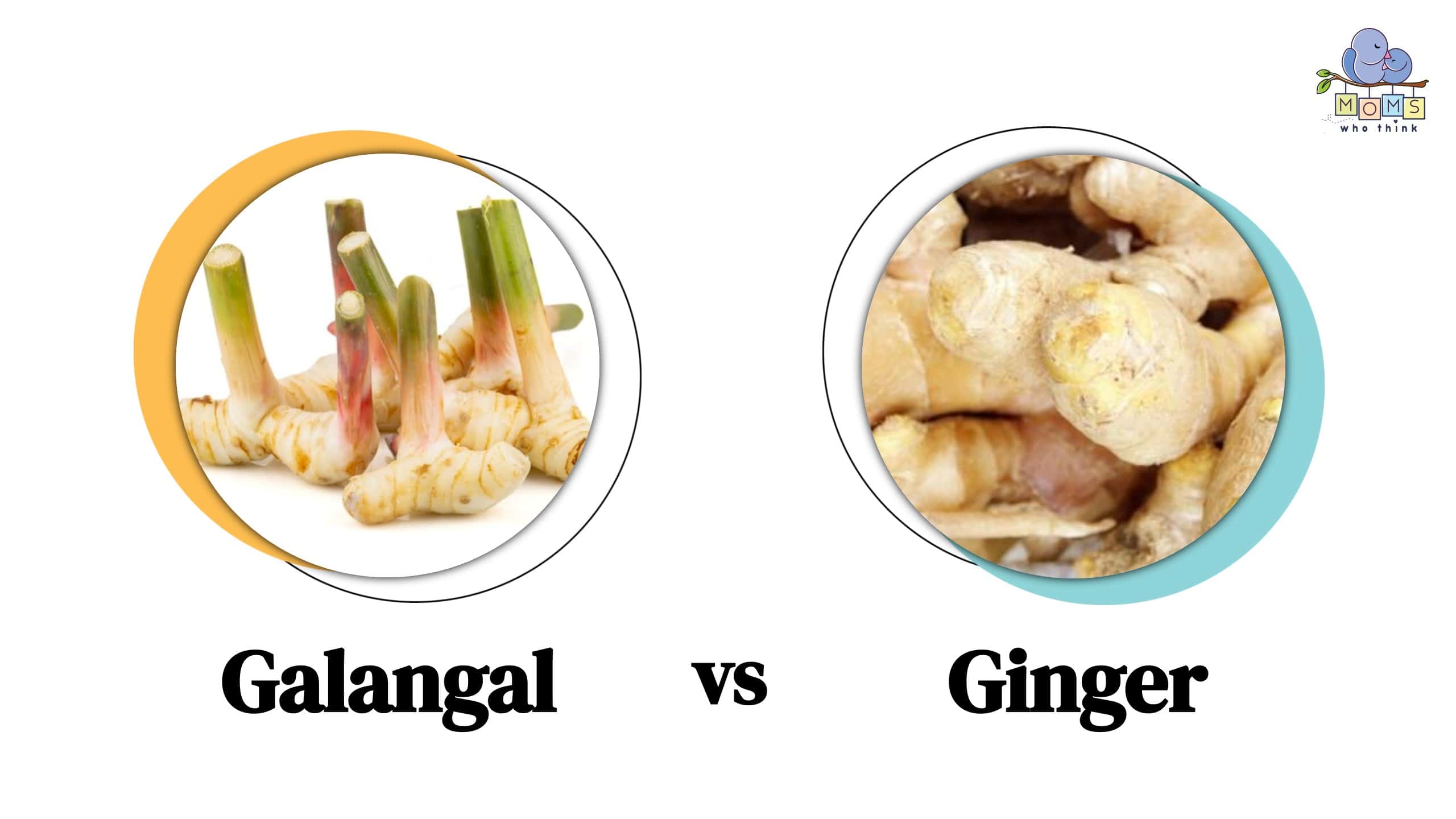Every home cook should get to know the tubal spices galangal and ginger. The two spices are easy to confuse. They have a similar look and are both part of the Zingiberaceae family and grow underground in a horizontal pattern. Both are sold fresh and in powder form and are popular in Asian cuisine. But the true difference between the two is in the taste profile and what they bring to the dish. If you are an avid home cook and love making Indian, Vietnamese, Chinese, and Thai food, then you will want to learn more about these two spices; they can help you up your game in the kitchen.
Galangal vs. Ginger: Key Differences
Have you ever accidentally picked up galangal instead of ginger? It's easy to do, and you probably realized as soon as you got home that they are dramatically different in taste and texture. From the outside, it is easy to make that mistake. They are both shades of beige, while galangal is a little darker brown. Both have slight ridges, but galangal has more rings on the outer skin. But when you get them on the cutting board, the key differences are obvious.
Galangal has a thicker outside skin that requires peeling with a peeler or knife. Ginger has a softer skin that is easy to remove by scraping it with a teaspoon. Once peeled, you can see the difference in texture. Galangal has a pale yellowish color and a chalky texture. You have to slice it or mince it. While ginger is easy to grate, chop, or slice. When you cut into ginger, there is a little juice that comes out, and the strong odor sets it apart from galangal.
The taste of these two cousin spices is where they differ significantly. Galangal is stronger with some earthiness, often described as having a spicy, bright citrus flavor with pine undertones. In contrast, ginger has a tangy sweetness. Both are used in South Asian cooking in soups, stews, curries, and teas. But you should always follow the recipe and use the one that it recommends. The spices should never be a substitute for one another; the flavor and texture will change the final dish too much.
Galangal vs. Ginger: Nutritional Differences
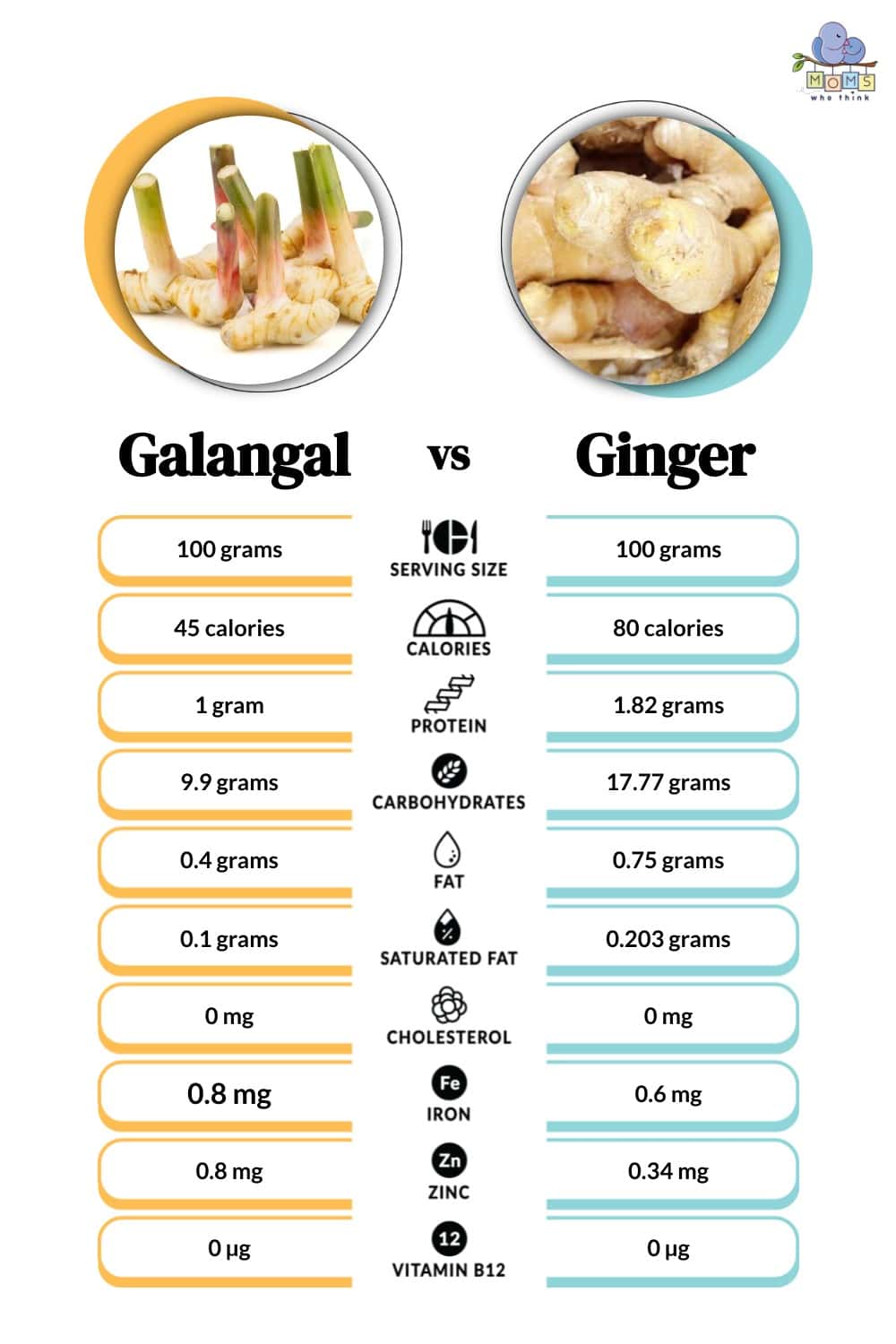
Galanga and ginger have some minimal nutrional differnces. But neither is a good source of carbs, protein, or healthy fats. But they are both rich in vitamins C and B. And full of healthy antioxidants. Galangal has less carbs and calories than ginger. The nutritional table shows some of their differences per 100-gram serving size. But 100 grams is close to ⅔ a cup, and that is a lot of galangal and ginger to use in one sitting. Generally, they are both used in much smaller amounts, like a teaspoon or tablespoon. So, while both have some health benefits, the amount you would need to consume is pretty hefty for these two strong-tasting root spices. In addition, consuming a lot of both of these spices can lead to gas, diarrhea, and heartburn. When it comes to galangal and ginger, a little goes a long way.
What is Galangal?
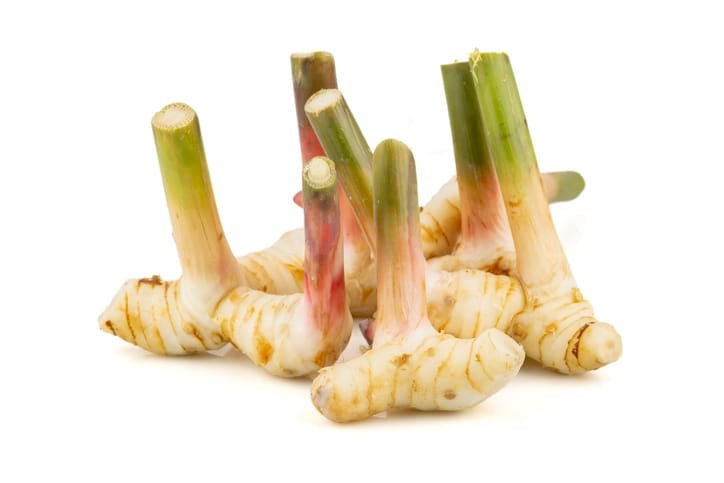
Fresh galangal has a unique taste.
©/ via Getty Images
If you shop at international markets, you may have seen this spice either fresh on the produce shelves or in powder. This root spice is difficult to find in the local supermarket. Galangal is a tube-shaped root spice similar to turmeric and ginger. It is sometimes called Thai or Siamese ginger, but it's actually its own plant. It comes from Southeast Asia, and it has culinary and medicinal uses. The outside fibrous skin is dark brown with distinct rings, and the inside is yellowish and firm. The skin is always removed before using it; a vegetable peeler or sharp paring knife is the easiest way to remove the skin. It has a spicy, almost citrus flavor with a slightly earthy finish.
Galangal is popularly used in Ayurvedic medicine. Ayurvedic medicine is a form of natural medicine from India that focuses on balancing the mind, body, and spirit. It differs from Western medicine because the focus is on using natural remedies and plant medicine, and galangal is commonly used for its antibacterial properties. According to Healthline, galangal has antioxidants that can help fight certain cancers and inflammation. Some studies even suggest it can boost male infertility. However, not enough research has been done to fully support that claim.
What is Ginger?
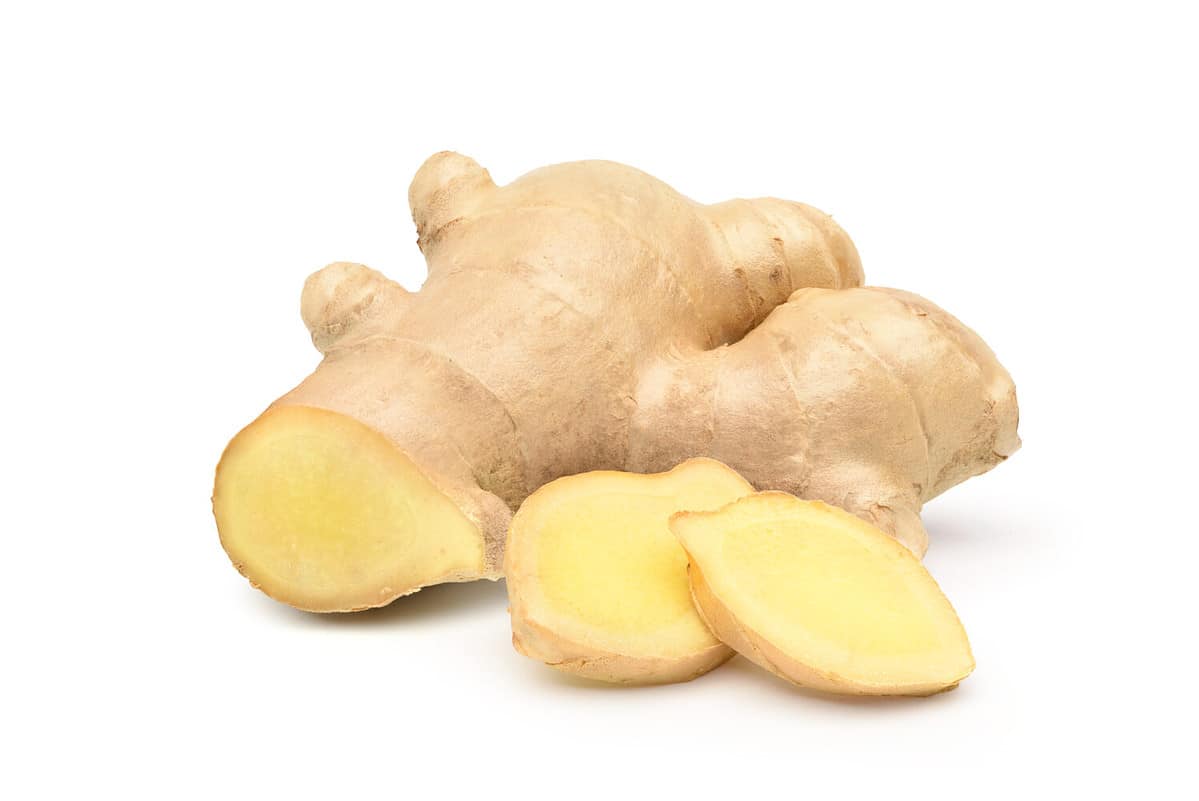
©Photoongraphy/Shutterstock.com
Unlike galangal, ginger is readily available in the produce section of most supermarkets. It is often near another pungent spice, garlic. You can also find it dried, pickled, and even candied. Ginger has a long history of use in the kitchen and medicinally. In the kitchen, it's used in many sweet and savory recipes. It also makes a tasty tea and artisanal candy makers use it in healthy candied alternatives. They cover it in chocolate, add it to brittles and caramels, and make it into mints, chews, and gums. The flavor is sharp and tangy with a mix of spicy and sweet, so it's a real star in the kitchen.
Medicinally, ginger is used to increase circulation, aid digestion, and lower blood sugar and cholesterol levels. It is often prescribed for nausea, and there are many forms of ginger for travelers who suffer from motion sickness. Ginger is also a natural remedy to the dreaded morning sickness that many women experience during early pregnancy.
How to Use Galangal
If you are a fan of Thai food, then chances are you have tasted galangal at your favorite Thai restaurant. It is often used in Thai curries, soups, and stews. One of the most popular ways to use galangal is in the classic Thai dish Tom Ka Gai. It is a soup with a rich coconut milk base with lemongrass and other spices. You can think of it as a kind of Thai version of chicken soup. It is also used in braised meats like braised pork belly and chicken thighs. It’s also popular in sweet dishes, and there is even a galangal ice cream and cookies with lime and coconut. The best way to learn more about using galangal in the kitchen is to explore Thai and Vietnamese cookbooks and see how it's used to create these mouth-watering recipes.
How to Use Ginger
Ginger is a staple spice in Chinese and Indian cooking. It adds a nice touch to soups, stews, and stir fry. You can mince it or grate it into many savory dishes. Anyone who eats sushi has come across pickled ginger; it's often served alongside sushi. When it's pickled, it takes on a pinkish hue, and that spiced ginger taste takes on the tanginess that only pickling provides. If you like your sweets with a bite, then you should try candied ginger. It's easy to make at home; you just need fresh ginger and sugar. And ginger tea is a great caffeine-free afternoon pick-me-up.
Growing Galangal and Ginger at Home
Both galangal and ginger are easy to grow at home. If you live in a warm climate like zones 9-12, then you can plant them both directly in the ground, but if you live somewhere with cold winters, it's best to plan them each in their own container so that when the temperature drops, you can move them inside. Both plants need a large pot; the bigger, the better, with well-draining soil and partial sun.
For galangal, plant three inches deep and 18 inches apart if planting multiples. And with ginger just one inch deep and 12 inches apart. Both plants like to be well hydrated, but be careful not to get too zealous and overwater because they are prone to root rot. Both plants are perennials, and once you get the plants established, this usually takes between ten months to a year; you can have fresh galanga and ginger whenever you need it.
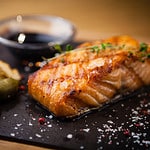
Ginger Soy Glazed Salmon
- Total Time: 15 minutes
- Yield: 4 servings
Ingredients
- 4 salmon fillets (about 6 ounces each)
- 3 tablespoons soy sauce
- 2 tablespoons honey
- 1 tablespoon fresh ginger, grated
- 2 cloves garlic, minced
- 1 tablespoon sesame oil
- 1 tablespoon rice vinegar
- 1 green onion, thinly sliced (for garnish)
- Sesame seeds (for garnish)
Instructions
- Preheat your oven to 400°F and line a baking sheet with parchment paper.
- In a small bowl, whisk together soy sauce, honey, grated ginger, minced garlic, sesame oil, and rice vinegar to create the glaze.
- Place the salmon fillets on the prepared baking sheet.
- Brush the salmon fillets generously with the ginger soy glaze, reserving some for later.
- Bake in the preheated oven for about 12-15 minutes or until the salmon is cooked through and flakes easily.
- While the salmon is baking, heat the remaining glaze in a small saucepan over medium heat until it thickens slightly.
- Once the salmon is done, brush it with the thickened glaze.
- Garnish with sliced green onions and sesame seeds.
- Serve the glazed salmon over steamed rice or quinoa.
Nutrition
- Calories: 350
- Sugar: 10 g
- Sodium: 600 mg
- Fat: 18 g
- Carbohydrates: 15 g
- Fiber: 1 g
- Protein: 30 g
